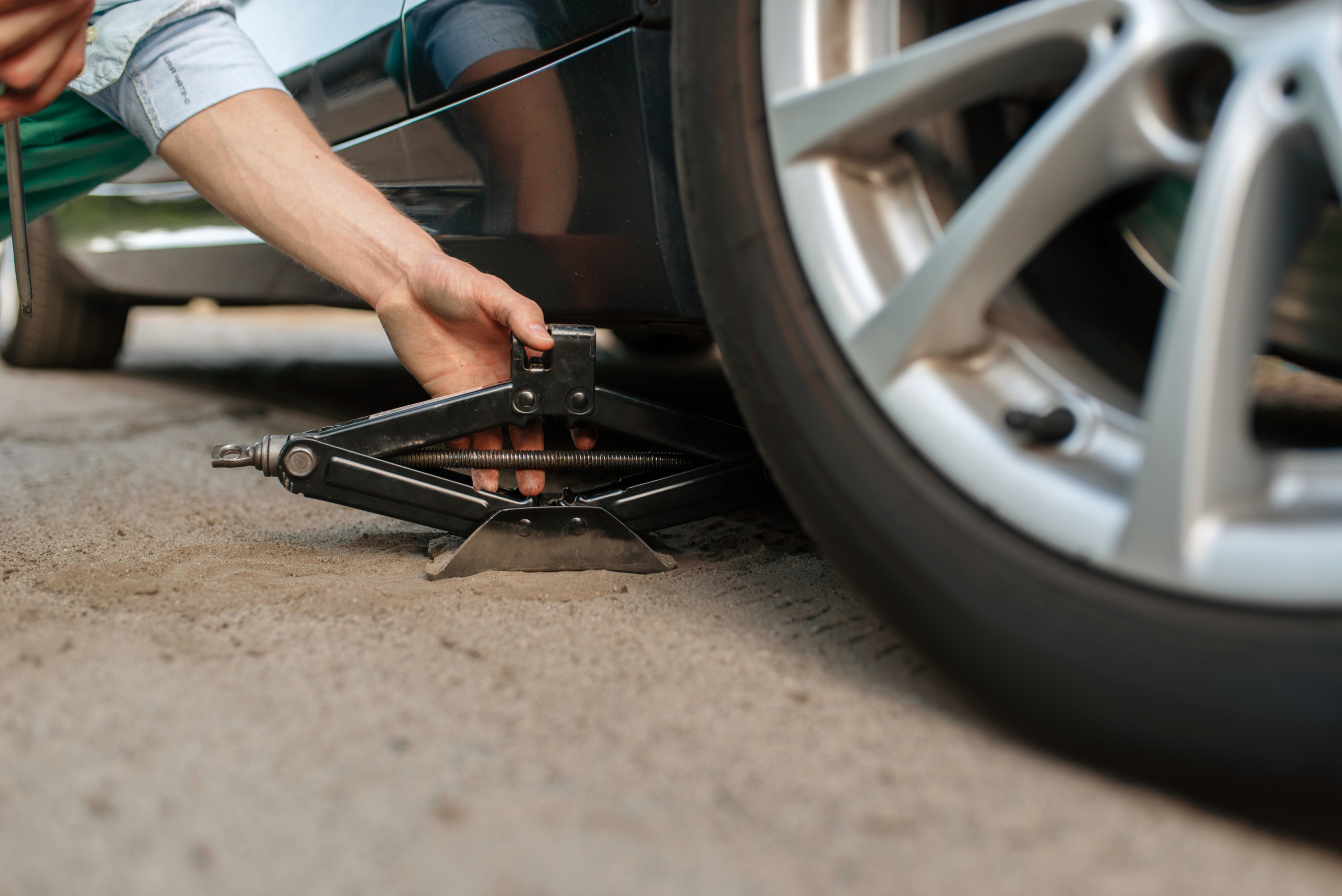Do you drive a car? Do you know how to change a tire? Do not worry if you nod to the first part and shake your head to the second. 1 in 5 drivers in North America say they have no clue about changing a tire. Even experienced drivers are often left scratching their heads simply because they are not faced with the situation often. So whether you are new to driving or just rusty about the process, our simple instructions below can help you get your car back on track in the event of a puncture.
Step-by-Step Guide to Changing a Flat Tire
#1 Pull Over: As soon as you sense a flat tire, slow down and pull over to a safe spot. Do not brake suddenly or turn sharply. Slow down gradually and pull over to a parking lot or wide shoulder.
#2 Flash Hazard Lights: Turn on your hazard lights to alert other motorists of your presence on the roadside to keep everyone safe. Apply the parking brake to prevent the car from rolling. In the absence of parking brakes, place bricks or stone wedges before the unaffected tires and on the other end of the flat to secure your vehicle.
#3 Check Owner’s Manual: Pull out your owner’s manual to look up specific instructions for fixing the flat tire. Not all vehicles have the same requirements.
#4 Spare Tire and Tools: If you don’t know where the spare tire is located in your car, the owner’s manual will mention it. Smaller cars usually have the spare tire located in the trunk of the vehicle under a latch. Larger SUVs and trucks suspend it under the vehicle. Bring out the two tools required to change a flat from the trunk: a jack and lug wrench. Some cars do not have spare tires or tools to change one. Visit an auto centre to learn about spare tire options if your vehicle does not come with one.
#5 Remove Wheel Cover: Pry off the hubcap covering the lug nuts in the centre of the wheel with the flat end of the lug wrench. If lug nuts are visible, twist them counter-clockwise to loosen them.
#6 Raise the Car with the Jack: Look up your owner’s manual to locate the jack. Use it to raise the car about six inches off the ground. To observe safety, stay away from the bottom of the car throughout the process. Loosen and remove the lug nuts with your fingers. Take off the tire from the wheel hub and place it flat down to prevent it from rolling away.
# 7 Install the Spare Tire: Put on the spare tire, aligning the rim with the lug bolts, making sure they are visible through the rim. Screw the lug nuts on the bolts in a criss-cross pattern. Fix the top lug nut; proceed to the nut on the opposite end then work diagonally so that the nuts stay in place when tightened and the wheel doesn’t wobble.
# 8 Lower the Car: Lower the car partially; check that the lug nuts are secure by screwing them clockwise with the wrench, using some force. Lower the car all the way to the ground. Remove the jack and put on the hubcap.
#9 Check Tire Pressure: If the tire pressure is low, fill it up with air at a nearby service station. Place your tools back in the trunk and release the parking brake before driving off. Avoid speeding when you drive on a spare. Stop at an auto care centre and get it professionally checked by a tire technician.
416 Wheels and Tires, Mississauga
416 Wheels and Tires provide a wide range of tire styles and brands for optimum performance.
Our experts have extensive knowledge on rims and tires, and are trained to provide quality customer service so you know you’re in reliable hands. Visit our store for professional tire repair, installation and balancing, rim repair and refinishing, tires sales, and any other related services.

